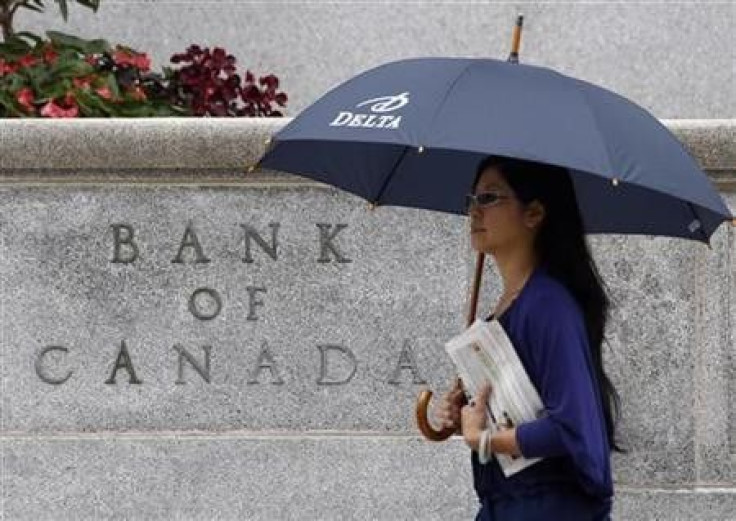Bank of Canada holds rates, shifts stimulus phrasing

The Bank of Canada held its key interest rate steady on Tuesday and dropped any mention of the need to raise rates, as the weak global economy forced it to cut sharply its growth and inflation projections.
Maintaining its overnight target rate at an ultra-low 1 percent, the central bank omitted language used in every decision since May on the need to withdraw monetary stimulus, saying simply there is considerable monetary policy stimulus in place.
It had begun softening its language in September, when it said this need has diminished.
A weaker global economy -- including an expected brief recession in the euro area -- prompted the bank to sharply cut its Canadian economic growth forecasts to 2.1 percent from 2.8 percent for this year and to 1.9 percent from 2.6 percent for 2012.
It now sees inflation returning to its 2 percent target 18 months later than previously expected -- at the end of 2013. Inflation was 3.2 percent in September, but the bank sees the rate declining to 1 percent by the middle of next year before bouncing back.
The weaker economic outlook implies greater and more persistent economic slack than previously anticipated, with the Canadian economy now expected to return to full capacity by the end of 2013, the bank said, revising its previous estimate of full capacity by mid-2012.
However, it was more upbeat on 2013 with a projection of 2.9 percent growth compared with 2.1 percent previously.
Nobody had expected the bank to change its key rate on Tuesday. The median forecast of analysts in a Reuters poll released October 18 was for the next rate hike to be in the third quarter of next year.
The Canadian dollar weakened to a session low of C$1.0054 to the U.S. dollar after the announcement.
The yield on the two-year Canadian government bond, which is especially sensitive to Bank of Canada interest rate moves, fell to 1.08 percent from 1.11 percent just before the announcement.
Canada's central bank became the first in the Group of Seven rich nations to raise interest rates following the global financial crisis, lifting the rate three times in mid-2010 to 1 percent from 0.25 percent.
It has been on pause since then, citing the weak U.S. recovery and now the European debt crisis.
Overnight index swaps, which are based on expectations for the key central bank policy rate, showed traders increased bets on a rate cut in the coming year after the Bank of Canada announcement.
© Copyright Thomson Reuters 2024. All rights reserved.











